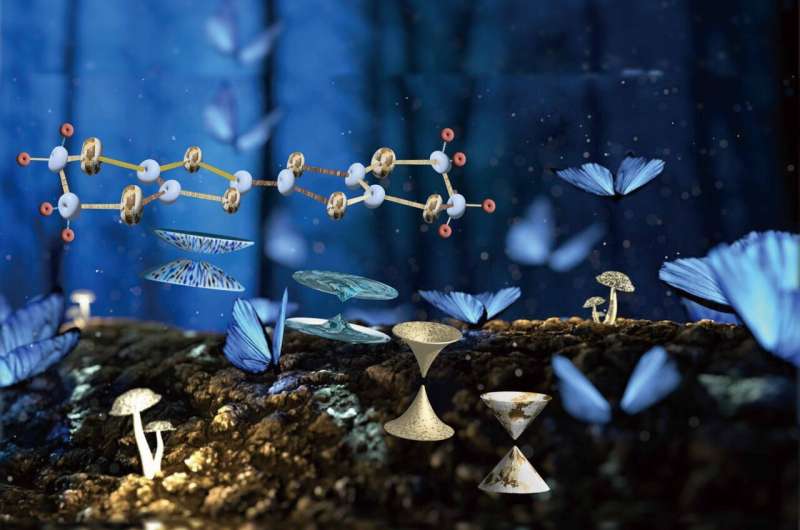
Dirac electrons were predicted by P. Dirac and discovered by A. Geim, both of whom were awarded the Nobel Prize in Physics in 1933 and in 2010, respectively. Dirac electrons behave like photons rather than electrons, for they are considered to have no mass, and in materials they move with light velocity.
Because of their differences from standard electrons, Dirac electrons are expected to add unprecedented electronic properties to materials. For example, they could be applied to electronic devices to perform computation and communication with extraordinary efficiency and low energy consumption.
To develop such technology, scientists must first understand the net properties and effects of Dirac electrons. But they generally coexist with standard electrons in materials, which prevents unambiguous observation and measurement.
In a recent study published in Materials Advances, Ryuhei Naito and colleagues discovered a method enabling selective observation of the Dirac electrons in materials. Using electron spin resonance, to directly observe unpaired electrons in materials to distinguish differences in character, the research group established a method to determine their scope of action in the materials and their energies.
The latter is defined by how rapidly they move, namely their velocity. This information requires a four-dimensional world, for it consists of positions (x, y, z) and energy (E). The research group has described it in an easy-to-understand scheme.
The research has taken our understanding Dirac electrons a step forward. We now know that their velocity is anisotropic and it depends on their direction and location, instead of the constant velocity of light.
More information: Ryuhei Oka et al, Nearly three-dimensional Dirac fermions in an organic crystalline material unveiled by electron spin resonance, Materials Advances (2023). DOI: 10.1039/D3MA00619K
Citation: Photon-like electrons in a four-dimensional world discovered in a real material (2024, March 14) retrieved 18 March 2024 from https://phys.org/news/2024-03-photon-electrons-dimensional-world-real.html
This document is subject to copyright. Apart from any fair dealing for the purpose of private study or research, no part may be reproduced without the written permission. The content is provided for information purposes only.